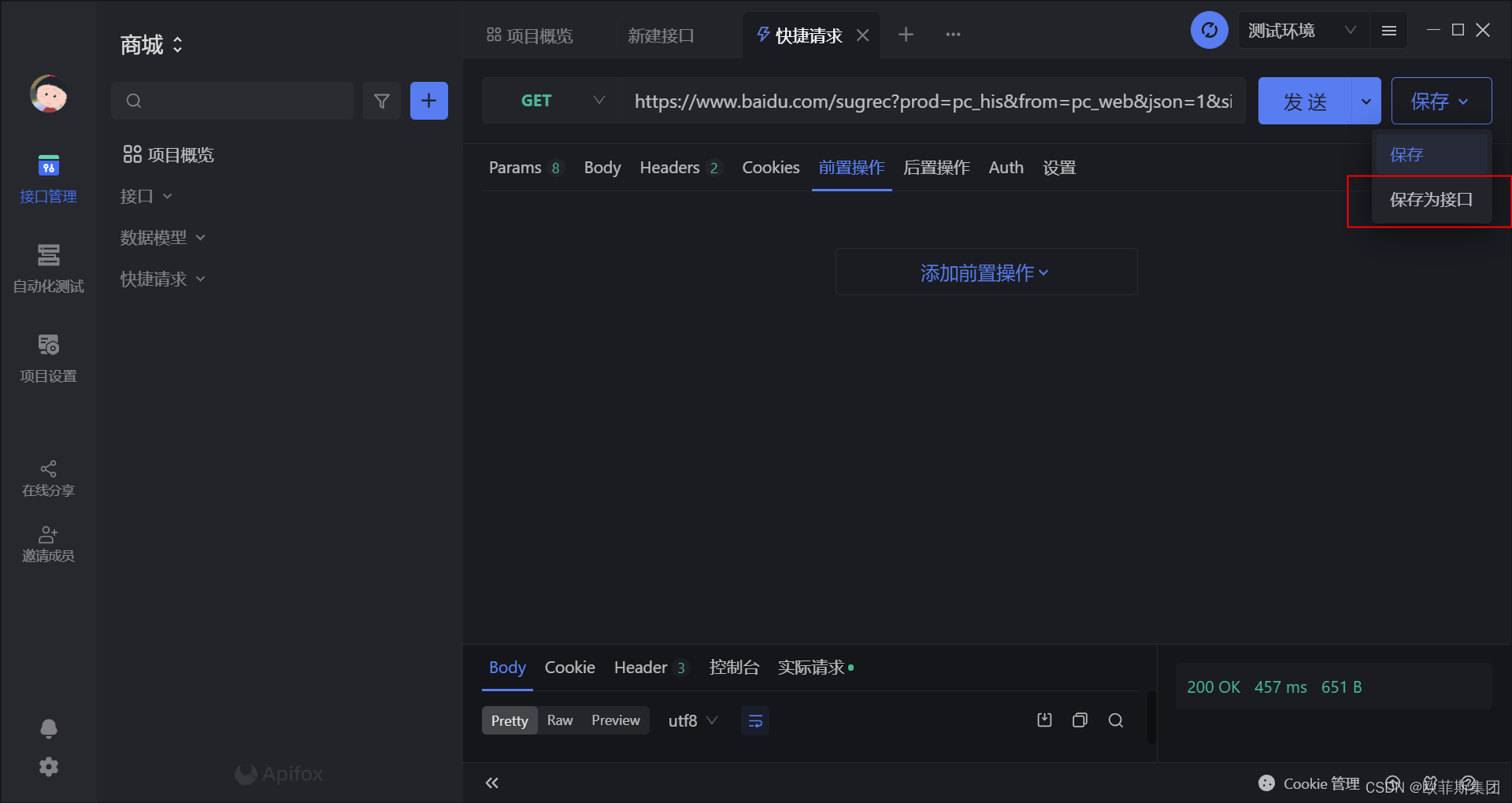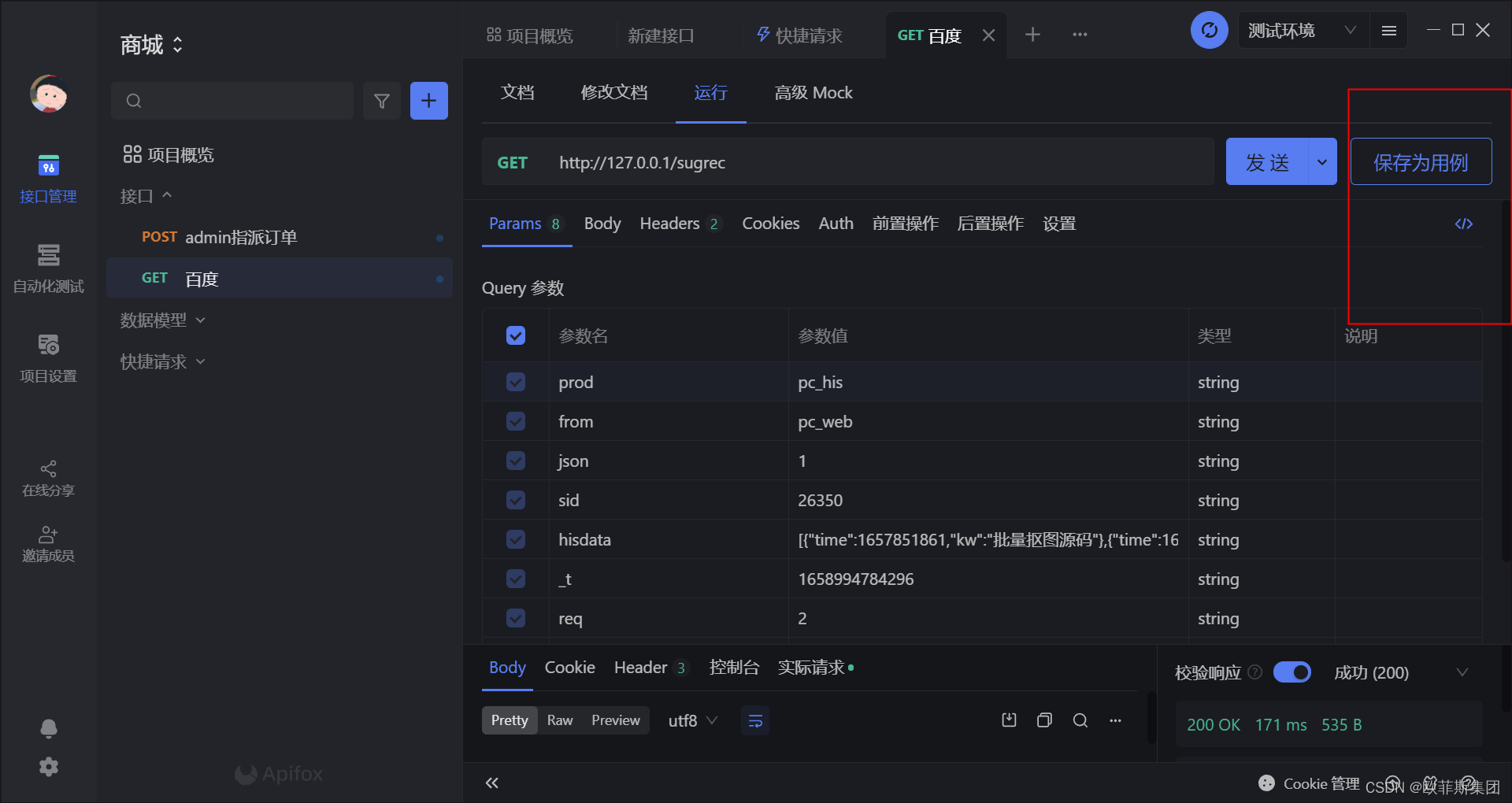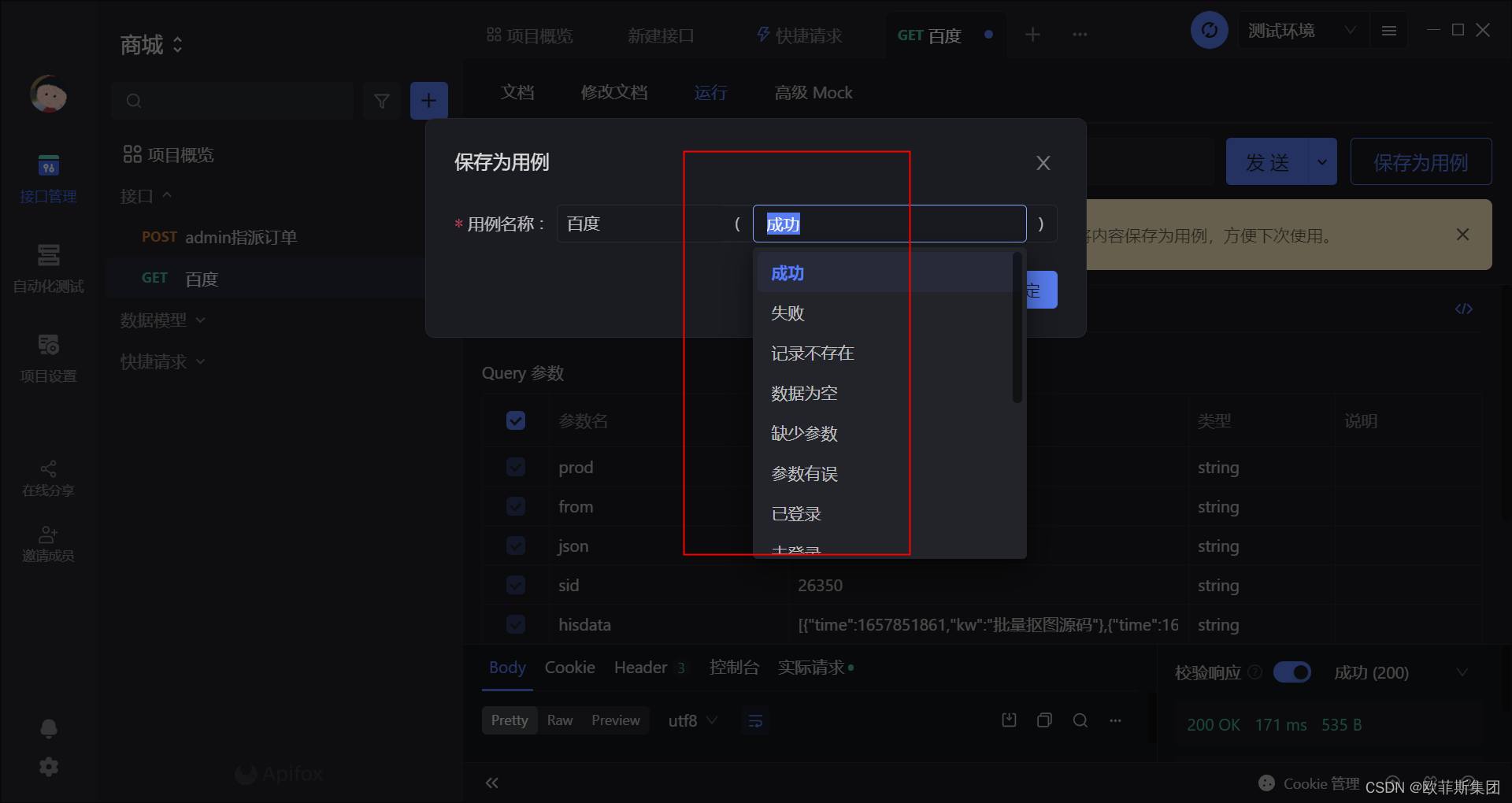Getting to know Apifox – how to use Apifox to do a simple interface test
Why do interface testing?
Interface testing is the most common test in daily testing. Interface testing can detect data interaction, whether parameter transmission is normal, and detect mutual logical dependencies between systems.
Whether it is front-end, back-end or testing, they will all come into contact with interface testing. It can be seen that a good choice of testing tools can greatly reduce the work of the team and improve the efficiency and quality of the development team.
Why Choose Apifox
Apifox is a collaborative platform integrating Postman, Swagger, JMeter and Mock. When contacting interface testing, the selection of interface testing tools is particularly important, which not only saves costs but also improves efficiency. The first interface testing tool I came into contact with was postman. This platform is easy to use for beginners, and the graphical interface is also very intuitive. However, many functions of postman are paid, which will increase the investment in development costs; The second is swagger, which is very useful for generating interface documents. The last is Apifox. After getting in touch with Apifox, there is no need to use other interface testing tools alone, which makes interface testing easier to manage.
Advantages of Apifox
1. Graphical interface, full Chinese version, easy to operate.
2. Most of the functions are open source, which reduces development costs (except for privatized deployment)
3. Apifox has all the functions that Postman has
4. Support interface reuse
5. Support data import, strong portability
6. Smart mock, custom data type
A simple interface test case, let you understand Apifox in seconds
When we open Apifox, we can create a new project. We can privatize our projects and view only ourselves, and at the same time, invite members to join our team.

Apifox has multiple ways of writing interface tests. Here are two commonly used ones. The first is to create a new interface directly in the project and fill in the corresponding interface, name, parameters, etc. The other way is to import by capturing packets, which is very convenient and basically does not need to write any parameters. Let me give you an example, and you will find that this method is simply not too cool!
Take the Baidu homepage as an example. We need to test whether Baidu can access normally, and then we can generate an interface by capturing packets.

Enter the Baidu homepage, after F12, refresh the webpage, find the corresponding event, copy the path

In this way, we captured the request and directly generated the interface in Apifox. Click the plus button in the middle and choose to import packet capture data,

Paste the packet capture document we just copied, ctrl+v here

After clicking OK, Apifox will automatically fill in the corresponding address and parameters for us. We only need to click send to test this interface.


In this way, a request is generated, and we can also save it as an interface.


After the interface is generated, we can execute the interface by clicking Run to test whether the interface can be used normally. At the same time, we can also save this interface as a use case.


A simple interface test is complete. For novices and beginners, Apifox is very easy to use and powerful. After reading this, you can try to do some simple interface tests yourself, maybe you can use it in future work.
